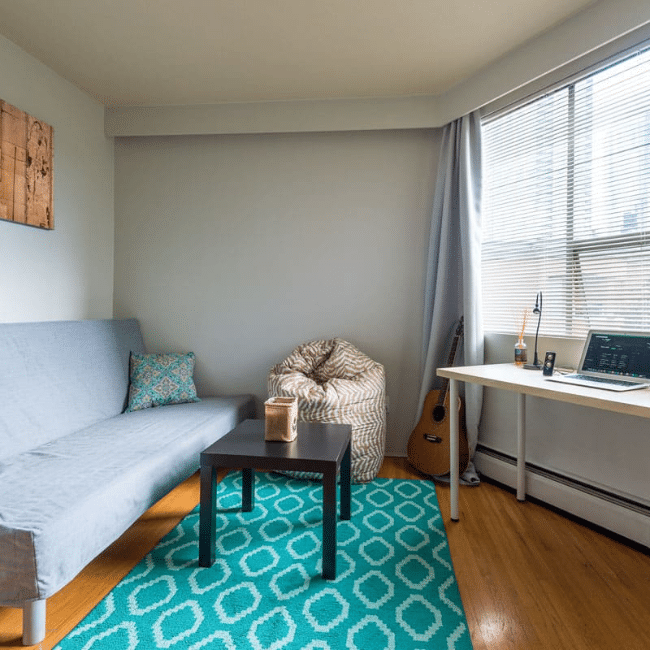How Big Should a New-Build Apartment Be?
When building new apartments, the first step is ensuring you are market-led in your approach, particularly in the build-to-rent sector, and building to a size that your customers want and need.
There are also minimum standards that the government sets to ensure liveable home standards.
For example, a one-bedroom apartment sleeping one person should be a minimum size of 39 square meters (m2) for a newly built property, including modern developments like modular homes.
All properties going through development will require sign-off from building control and unless under a general permitted development order, will also require planning permission.

-
by Robert Jones, Founder of Property Investments UK
With two decades in UK property, Rob has been investing in buy-to-let since 2005, and uses property data to develop tools for property market analysis.

Minimum Gross Internal Floor Areas (m2 )
Here are the Government minimum size standards based on the number of bedrooms and number of residents. Source: Gov.uk nationally described space standard
| Number of Bedrooms | Bed Spaces (people) | 1 Storey (m²) | 2 Storey (m²) |
|---|---|---|---|
| 1 | 1 | 39 (37)* | - |
| 1 | 2 | 50 | 58 |
| 2 | 3 | 61 | 70 |
| 2 | 4 | 70 | 79 |
| 3 | 4 | 74 | 84 |
| 3 | 5 | 86 | 93 |
| 3 | 6 | 95 | 102 |
| Number of Bedrooms | Bed Spaces (people) | 3 Storey (m²) | Built-in Storage (m²) |
|---|---|---|---|
| 1 | 1-2 | - | 1.0-1.5 |
| 2 | 3-4 | - | 2.0 |
| 3 | 4-6 | 90-108 | 2.5 |
| 4 | 5-8 | 103-130 | 3.0 |
| 5 | 6-8 | 116-134 | 3.5 |
| 6 | 7-8 | 129-138 | 4.0 |
Apartment Development Notes
1. Built-in storage areas are included within the overall GIAs and include an allowance of 0.5m² for fixed services or equipment such as a hot water cylinder, boiler or heat exchanger.
2. GIAs for one storey dwellings include enough space for one bathroom and one additional WC (or shower room) in dwellings with 5 or more bedspaces. GIAs for two and three storey dwellings include enough space for one bathroom and one additional WC (or shower room). Additional sanitary facilities may be included without increasing the GIA provided that all aspects of the space standard have been met.
3. Where a 1 bedroom, 1 person has a shower room instead of a bathroom, the floor area may be reduced from 39m² to 37m², as shown bracketed.
4. Furnished layouts are not required to demonstrate compliance.
Do Existing Properties Need to Have a Minimum Size Standard?
For existing buildings being converted under permitted development, whether for flipping houses or long-term investment, they also need to fit the same minimum size standards as of April 2021.
There will be apartments that exist throughout the country that were converted before this date that could still fall below these space standards however.
For these properties securing the necessary financing for a buyer to purchase these properties can be challenging and apartments below this size threshold often struggle to qualify for standard mortgage offerings, meaning you'll have to target cash buyers instead.
Why Do New Build Apartments Have Minimum Size Standards?
From a practical living perspective, this minimum size requirement ensures comfortable, functional living spaces that meet modern energy efficiency standards and ensure people have a minimum standard of living.
They also accommodate essential furniture and daily activities. It provides enough room for basic amenities like a properly sized bathroom, functional kitchen space, and a living area that can serve multiple purposes - particularly important in today's property market where many tenants and homeowners work from home.
Market research consistently shows that there's growing interest in 'efficient' living spaces (although people actually want affordable, not small homes), particularly in urban areas.
Properties falling below this threshold often struggle to maintain their value and appeal over time, even with value-adding additional features like communal areas, gardens, and parking spaces, which traditionally increase a property's appeal and price, when adding features like a driveway.
This impacts not just immediate sales potential but also long-term investment value. While 'micro-apartments' under 39m² occasionally appear in certain urban markets, from historic developments, they typically represent a niche product with limited broader market appeal.
Developers should note that while 39m² represents the minimum viable size, local market conditions often demand larger spaces. In areas where existing properties typically offer more generous proportions, strictly adhering to minimum sizes might position new developments at a competitive disadvantage. The key is to align development decisions with local market expectations while ensuring compliance with these fundamental standards.
If the average apartment size for a one bedroom is 50 square meters in your local area then you are going to struggle to sell and tenant a property at 39m².
For property investors and developers, understanding these size requirements helps inform better investment decisions. Rather than viewing 39m² as a target, it's more useful to consider it as a baseline from which to assess and build a financial model and forecast.
This is helpful when reviewing a new development, considering the land value of the site using the residual method of valuation through to the resale value of the apartments.
Maximising the number of apartments by developing more smaller units isn't always the best solution to increase returns.
Many successful developments opt for slightly larger units - perhaps 45-50m² - where the ability to sell quickly and achieve a higher price per unit is the top focus, rather than an 'on paper' higher margin for the whole development.
This practical approach to size standards, combined with the growing focus on zero-carbon homes, ultimately creates more sustainable developments that maintain their value and marketability over time, benefiting both developers and future property owners.
